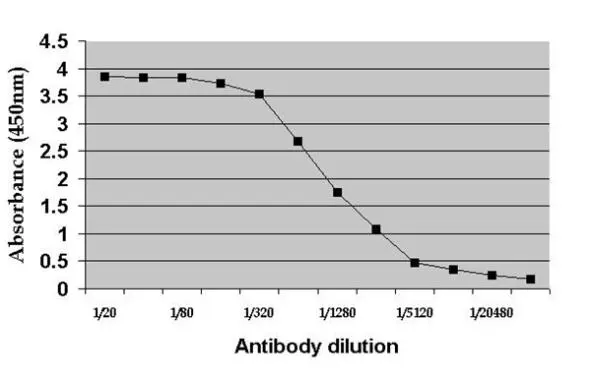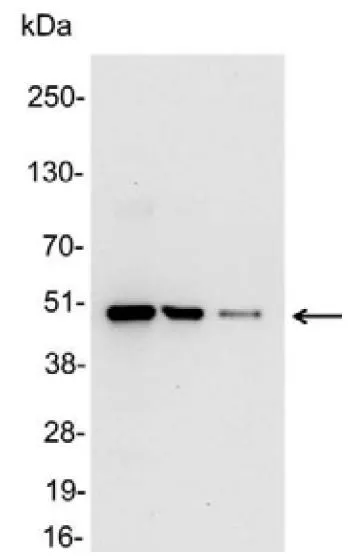
WB analysis of 200, 100, and 50ng of E. coli lysate containing tagged fusion protein using GTX19312 c-Myc antibody (HRP). Dilution : 1:25000
c-Myc antibody (HRP)
GTX19312
ApplicationsImmunoFluorescence, Western Blot, ELISA, ImmunoCytoChemistry, ImmunoHistoChemistry
Product group Antibodies
TargetMYC
Overview
- SupplierGeneTex
- Product Namec-Myc antibody (HRP)
- Delivery Days Customer9
- Application Supplier NoteWB: 1:1,000- 1:30,000. ICC/IF: 1:200-1:500. ELISA: 1:10,000- 1:100,000. *Optimal dilutions/concentrations should be determined by the researcher.Not tested in other applications.
- ApplicationsImmunoFluorescence, Western Blot, ELISA, ImmunoCytoChemistry, ImmunoHistoChemistry
- CertificationResearch Use Only
- ClonalityPolyclonal
- Concentration1 mg/ml
- ConjugateHRP
- Gene ID4609
- Target nameMYC
- Target descriptionMYC proto-oncogene, bHLH transcription factor
- Target synonymsMRTL, MYCC, bHLHe39, c-Myc, myc proto-oncogene protein, avian myelocytomatosis viral oncogene homolog, class E basic helix-loop-helix protein 39, myc-related translation/localization regulatory factor, proto-oncogene c-Myc, transcription factor p64, v-myc avian myelocytomatosis viral oncogene homolog, v-myc myelocytomatosis viral oncogene homolog
- HostRabbit
- IsotypeIgG
- Protein IDP01106
- Protein NameMyc proto-oncogene protein
- Scientific DescriptionThis gene is a proto-oncogene and encodes a nuclear phosphoprotein that plays a role in cell cycle progression, apoptosis and cellular transformation. The encoded protein forms a heterodimer with the related transcription factor MAX. This complex binds to the E box DNA consensus sequence and regulates the transcription of specific target genes. Amplification of this gene is frequently observed in numerous human cancers. Translocations involving this gene are associated with Burkitt lymphoma and multiple myeloma in human patients. There is evidence to show that translation initiates both from an upstream, in-frame non-AUG (CUG) and a downstream AUG start site, resulting in the production of two isoforms with distinct N-termini. [provided by RefSeq, Aug 2017]
- Storage Instruction2°C to 8°C
- UNSPSC12352203
References
- Pyramiding of transgenic immune receptors from primary and tertiary wheat gene pools improves powdery mildew resistance in the field.Read more

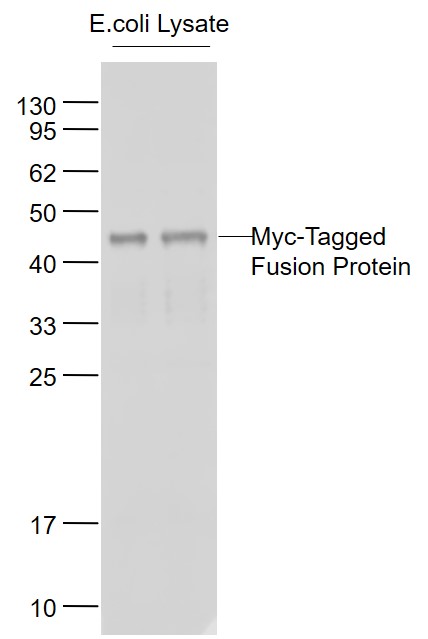


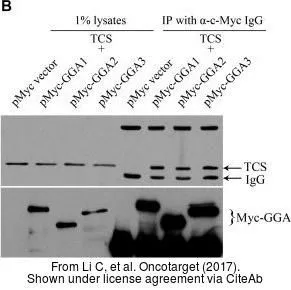
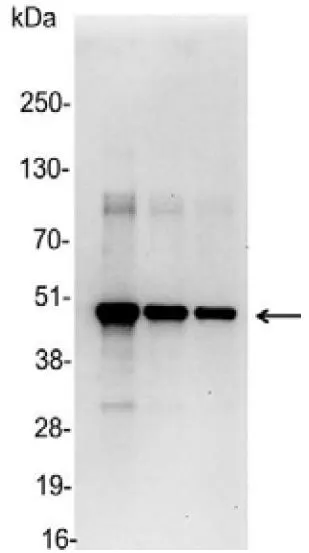
![FACS analysis of transfected LST-1-c-Myc in HEK-293 cells (red) compared with non-transfected HEK-293 cells (blue) using GTX10826 c-Myc antibody [9E10] (FITC).](https://www.genetex.com/upload/website/prouct_img/normal/GTX10826/GTX10826_20191025_AP_006_112_w_23060120_166.webp)
